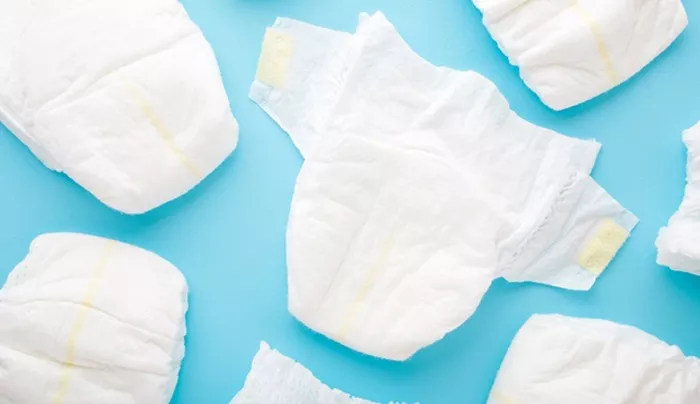Disposable nappies, also known as diapers, are single-use undergarments designed to absorb urine and feces from infants and toddlers. Unlike cloth nappies, disposable nappies are made of synthetic materials, including polymers, and are intended to be thrown away after use. They are widely used by parents due to their convenience and ability to keep babies dry and comfortable for longer periods. Disposable nappies have become a staple in infant care, offering a practical solution for busy parents.
The Evolution of Disposable Nappies
The concept of disposable nappies was first introduced in the mid-20th century, revolutionizing infant care. Prior to their introduction, cloth nappies were the standard. The invention of the modern disposable nappy is attributed to chemical engineer Vic Mills, who worked on creating a product that would reduce the effort and time required for parents to wash and reuse cloth nappies. Today, disposable nappies are available in various sizes, materials, and features to cater to different needs and preferences.
How Do Disposable Nappies Work?
Disposable nappies are designed to absorb and contain urine and feces while keeping the baby’s skin dry. They are made from a combination of materials that work together to provide absorbency, leakage protection, and comfort.
Materials Used in Disposable Nappies
The materials used in disposable nappies include:
Absorbent Core: The core is typically made of wood pulp and a superabsorbent polymer, which absorbs moisture quickly and locks it away to prevent leaks.
Top Sheet: The top sheet is the layer closest to the baby’s skin. It is usually made from soft, nonwoven fabric to ensure comfort and prevent irritation.
Waterproof Outer Layer: The outer layer of the nappy is waterproof, preventing leakage and keeping the outer clothing dry.
Elastic Waistbands and Leg Cuffs: These features help create a snug fit around the baby’s waist and legs, preventing leaks and providing a secure fit.
Types of Disposable Nappies
1. Standard Disposable Nappies
Standard disposable nappies are the most common type and are designed for everyday use. They come in a variety of sizes to accommodate babies from newborns to toddlers. These nappies are available in different absorbency levels to suit the needs of the child, depending on their age and how often they urinate.
2. Premium Disposable Nappies
Premium disposable nappies are designed with added features for enhanced comfort and performance. They often include extra-soft materials, better leakage protection, and additional layers for increased absorbency. These nappies may also feature breathable fabrics that allow air circulation, reducing the risk of diaper rash.
3. Overnight Disposable Nappies
Overnight nappies are specifically designed to provide extra absorbency during the night, ensuring that babies remain dry for extended periods. They are ideal for babies who sleep for long stretches without a diaper change.
4. Eco-Friendly Disposable Nappies
Eco-friendly disposable nappies are made from sustainable materials and are designed to reduce environmental impact. They are biodegradable and free from harmful chemicals. These nappies are a good option for parents who are concerned about the environment.
Benefits of Disposable Nappies
Disposable nappies offer several benefits for both parents and babies. Some of the key advantages include:
Convenience: Disposable nappies can be easily disposed of after use, saving time and effort in washing and drying cloth nappies.
Absorbency: The materials used in disposable nappies provide excellent absorbency, helping to keep the baby’s skin dry and preventing leaks.
Comfort: Disposable nappies are designed with soft materials that are gentle on the baby’s skin, reducing the risk of irritation and rashes.
Leak Protection: Disposable nappies feature elastic waistbands and leg cuffs that help prevent leaks, even during periods of heavy urination.
Hygiene: Since disposable nappies are discarded after use, they reduce the risk of bacterial growth and ensure better hygiene for babies.
Considerations When Choosing Disposable Nappies
While disposable nappies offer many benefits, there are a few factors to consider when choosing the right nappy for your baby:
Size: It is important to choose the correct size of nappy to ensure a snug fit. A poorly fitting nappy can lead to leaks and discomfort.
Absorbency: Consider your baby’s age and how much they urinate. Newborns typically need nappies with higher absorbency, while older babies may require less frequent changes.
Skin Sensitivity: Some babies have sensitive skin and may be prone to diaper rash. Look for nappies that are hypoallergenic and free from harsh chemicals.
Eco-Friendliness: If environmental concerns are important to you, consider choosing eco-friendly disposable nappies that are biodegradable and made from sustainable materials.
Price: Disposable nappies come in a wide range of prices, and the choice may depend on your budget and the features you prioritize.
How to Dispose of Disposable Nappies
Proper disposal of disposable nappies is important for maintaining hygiene and protecting the environment. Here are some tips:
Wrap the Nappy: After use, wrap the nappy tightly to prevent any odors from escaping. Some nappies come with sticky tabs to make wrapping easier.
Dispose of in a Bin: Place the wrapped nappy in a trash bin. Avoid flushing disposable nappies down the toilet as they can clog plumbing.
Consider Composting: Some eco-friendly nappies can be composted, but make sure to check the packaging to see if they are biodegradable and safe for composting.
Conclusion
Disposable nappies are an essential product for parents, offering a convenient and effective way to keep babies clean and comfortable. With various types available, it’s important to choose the right nappy that fits your baby’s needs, considering factors such as absorbency, skin sensitivity, and environmental impact. When used correctly and disposed of properly, disposable nappies provide a hygienic solution to baby care and help parents maintain a stress-free diapering routine.
Related topics:


